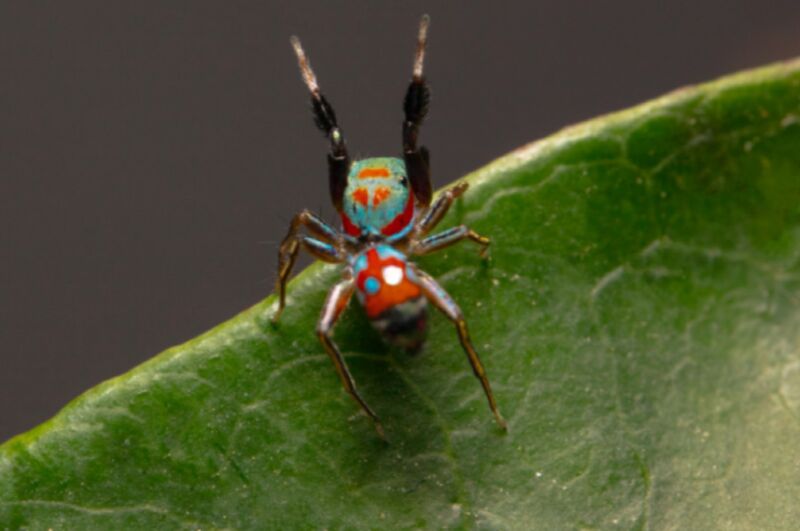These tiny jumping spiders walk like ants to evade predators

Enlarge / The colorful jumping spider Siler collingwoodi mimics the walk of an ant to evade predators. (credit: Hua Zeng)
We typically think of camouflage in nature in terms of bodily coloration, enabling the species to blend in with the background and evade predators. But previous studies have documented locomotor mimicry in some species, like swallowtail butterflies and clearwing moths, as well as the jumping spider Myrmarachne formicaria, which mimics the limb use and general movement of ants. The latter is an example of perfect mimicry, generally assumed to be most effective in terms of evading predators.
But Hua Zeng, an ecologist at Peking University in China, and colleagues were intrigued by the colorful jumping spider Siler collingwoodi, which exhibits imperfect mimicry, and decided to run some lab experiments to determine how this might confer protective benefits They also set out to explore the effectiveness of the spider's coloration as a camouflage strategy, describing their results in a new paper published in the journal iScience.
Unlike typical ant-mimicking spiders that mimic the brown or black body color of ants, S. collingwoodi has brilliant body coloration," said Zeng. From a human's perspective, it seems to blend well with plants in its environment, but we wanted to test whether their body coloration served as camouflage to protect against predators."